B R I DGING THE V I SION
with Dr. Kate Daly Rolander
Welcome to our spring issue of PROGRESS, focusing on all things math!
“I’m not a math person.”
“I don’t like math.”
“When will I ever use this?”
These are likely things you’ve heard your learners say or even things you’ve thought about yourself. Arithmophobia is indeed a real thing, and when it comes to learning, students in math classes aren’t the only people who have math anxiety; instructors feel it, too. But, as the authors in this issue demonstrate, all teachers can become math teachers! Math is often the cause of a good amount of anxiety, and it’s the GED® test that learners fnd the most challenging to pass.
In this issue of PROGRESS, math enthusiasts, math converts, and recently recovered math-phobes share how they’ve developed new relationships with math and the strategies they’ve adopted to help their adult learners overcome their math fears.

My own journey with math has been bumpy. The only “D” I ever earned in my life was in high school trigonometry, and while I tried to tell myself that my poor performance was more a refection of my absentee golf-coach math teacher than of my own ability to learn, the experience left its mark. I avoided math classes and college majors that were math heavy at all costs. It wasn’t until I had to take statistics classes as part of an education degree that I felt even remotely at home with math again, and I think this was because it was all taught in contexts that were relevant to my interests—to learn more about how people learn. Once I had a reason to be interested, and once I had instructors who really cared about how we learned, everything changed. Math and I are friends now—and pretty good ones.
Throughout the ar ticles that follow, we learn about how these educators approach the teaching of math concepts in their adult learning programs, and most importantly, how they work to make math approachable. Heidi Schuler-Jones (p. 3) writes about the Curriculum for Adults Learning Math (CALM) and its focus on conceptual understanding and relevance. Pam Stoltz (p. 6) and Melissa Williams (p. 12) both write about their approaches to helping themselves and
Continued on p. 2>>>
P3
CALM: The Way Math Should Be
P6
Math Phobia: You Don’t Have to Be an Expert
P9
The Mysterious World of Math
P12
Math Teachers vs. Teacher of Math
P14
Lessons Learned Teaching Math to Adults
P16
Teaching GED® Math
P18
ChatGPT + AdultEd/GED®: How Do They Work Together?

P20
Teaching Adult Learners in Corrections with an Emphasis on Numeracy & Mathematical Operations
P23
Wait, What!?! Fractions in a Reading Class?
P25
Integrating Numeracy into the Adult ESOL Classroom
P28
PROGRESS Calendar
June 2023 Volume #33, No. 2
PROGRESS
PROGRESS is published by: Virginia Adult Learning Resource Center Virginia Commonwealth University 3600 West Broad Street, Suite 108 Richmond, VA 23230 valrc.org
Permission is granted to reproduce articles from this newsletter. Please credit the author and PROGRESS
Submissions and letters are welcome. Contact Dr. Katherine Hansen, PROGRESS editor. (804) 827-2612 (800) 237-0178 kghansen@vcu.edu
We reserve the right to decline publication.
Interim Director, Ofce of Career, Technical, and Adult Education
J. Anthony Williams, Ed.D.
Adult Education Coordinator, Ofce of Career, Technical, and Adult Education
Heidi Silver-Pacuilla, Ph.D.
VALRC Director of Literacy Programming


Kate Daly Rolander, Ph.D.
Editor-In-Chief
Katherine Hansen, Ed.D.
This product was fully created through a cooperative agreement to the Virginia Adult Learning Resource Center at the Virginia Commonwealth University from the Virginia Department of Education, grant award numbers V002A190047 and V002A200047 under the Workforce Innovation and Opportunity Act. The opinions expressed herein, however, do not necessarily represent the position or policy of the U.S. Department of Education, and no ofcial endorsement by the Department should be inferred.
GED® and GED Testing Service® are registered trademarks of the American Council on Education (ACE) and may not be used or reproduced without the express written permission of the American ACE or GED Testing Service®. The GED® and GED Testing Service brands are administered by GED Testing Service® LLC under license from the American Council on Education.
learners overcome math phobia. Kathaleen Shelor (p. 9) demystifes the world of math for us with strategies and resources. Dr. Krissy Anderson-Bassett (p. 14) writes about the importance of being honest with our learners about our own math anxieties and sharing with them how we get through our own math insecurities as instructors. Brandie Millar (p. 16) shares steps, strategies, and resources that are interactive and supportive for GED® math test preparation. Christopher Scott (p. 20) shares his experiences in corrections building math confdence in his learners. Janet Sodell (p. 23) writes about how anticipating math anxiety and making math concepts concrete and less abstract can help learners see the relevance of what they’re learning to their lives. And Hali Massey (p. 25) shares example activities for teaching numeracy in English language classes at all skill levels.
I hope you enjoy these pages, and I also hope you come away with some great ideas, strategies, resources, and–most importantly–new outlooks on math and math instruction.
Dr. Kate Daly Rolander is the Director of Literacy Programming and Workforce Education Specialist at the Virginia Adult Learning Resource Center (VALRC). She leads the team of educational specialists in carrying out the VALRC mission of equipping the feld of adult education and literacy with essential skills and resources through an equity mindset. In addition, Kate also supports Virginia’s development and implementation of career pathways programs, assists instructors and staf in tailoring instruction for workforce readiness, and coordinates the state’s PluggedInVA programs.

>>>Continued from p.1
p. 2 PROGRESS June 2023
BY HEIDI SCHULER-JONES
Adult education can be overwhelming for new teachers, especially math.
Many adult education teachers learn quickly that we don’t choose our environment. We teach whatever is needed to whomever shows up at whatever level they are that day using whatever patchwork of materials are available in the shared classroom space. Students usually need math instruction, so we select whatever book we have the most copies of, began with chapter one, and work from there as far as we can, hoping we will not have to teach something that has never really made sense to us. If we encounter unfamiliar topics, we fnd online videos to learn what we need to teach our students. Sound familiar?
The challenge of teaching math from cover-to-cover is that it makes math feel like a series of discrete topics—disconnected and unrelated. We think we must begin with whole numbers long before algebra can be taught. If multiplication tables are not mastered, then we delay teaching fractions and spend our precious direct instruction time trying to get students to memorize facts. It’s a cycle of repeating instruction the way we learned and the way our students struggled to learn the frst time— but that’s what we know and what we see in most math materials.
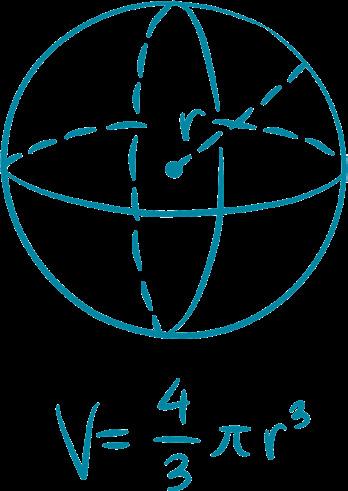
Teaching math and numeracy concepts can help.
In 2018, the Adult Numeracy Center (ANC) at TERC in Cambridge, Massachusetts set out to address these issues by developing a comprehensive math curriculum that would become the Curriculum for Adults Learning Math (CALM). Through a grant from Massachusetts’ Adult and Community Learning Services, the ANC designed a math curriculum to help students reach Educational Functioning Level gains, college and career readiness, and WIOA compliance, yet be fexible enough to teach in multilevel classes and programs with inconsistent attendance. The experienced development team followed the mantra “slow down to speed up,” i.e., by slowing instruction and ensuring students frst have a solid mathematical foundation, they speed up and progress further toward their educational goals in the long run.
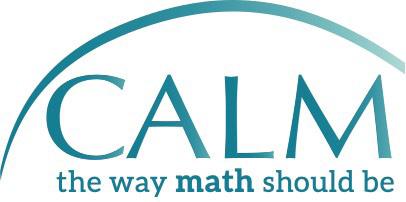
The team focused on conceptual understanding as a means of changing habits of mind and facilitating a growth mindset. “Conceptual understanding is defned as “an integrated and functional grasp
Continued on p. 4>>>

p. 3 PROGRESS Volume 33, No. 2
>>>Continued from p. 3
of mathematical ideas” (Kilpatrick et al., 2001, p. 118). These two aspects of conceptual understanding—integrated and functional—frame the ability to think and act numerately and efectively. “Across the frameworks, this is described with words like ‘meaning-making,’ ‘relationships,’’ ‘model,’ and ‘understanding’” (Ginsberg et al., 2006, p. 22). From prior work with National Science Foundation grant projects like EMPower and Teachers Investigating Adult Numeracy, the team knew that through conceptual understanding and problem-solving, students learn to transfer knowledge from the classroom to life. As students realize there are many strategies for tackling a math situation, they build procedural fuency—which means that, according to the College and Career Readiness Standards for Adult Education (CCRSAE), “Students with a solid conceptual understanding see mathematics as more than just a set of procedures. They know more than ‘how to get the answer’ and can employ concepts from several perspectives” (Pimentel, 2013, p. 45).
Experiencing the coherence of math and connecting it to the lives of adults.
The other unique design of CALM is the intentional organization that highlights the rich connections between math content. The Scope and Sequence, which ofers an overview of the 22 units, shows a coherent mathematics curriculum aligned to strategically selected standards from Level B (to ensure a strong foundation in number and operation sense) through Level E of the CCRSAE. This variety of standards prepares students for high school equivalency and lays the foundation for college and career readiness. This curriculum is designed to prepare adult learners to be college-ready and demonstrate that readiness on an exam. However, we know that students who need a stronger understanding of concepts will beneft from more time in the earliest units to think critically and connect math concepts.

Each unit closes with an application of that unit’s key ideas to a workforce-related project. Unlike typical curricula, multiple math concepts appear at the same time with one essential topic anchoring the lessons. For example, Unit 2 focuses on proportional reasoning in the context of t-shirt production and incorporates three levels of standards from measurement, proportional reasoning, and scale drawings.
Likewise, we intentionally introduced concepts considered higher-level at lower levels. Students won’t master them by the end of a unit. Rather, these concepts intentionally grow across units to deepen and connect ideas. For example, we introduce proportional reasoning, a big idea considered the gateway to learning abstract algebra, in Unit 1 with an emphasis on a real-world application of scale drawings. In Unit 4, students reason proportionally with percents as rates and in Unit 18 with
PROGRESS June 2023
function tables. Overall, students see the coherence of the math domains and explore real-world contexts in which they co-exist. Collaborative learning opportunities challenge the idea of what math class has been and foster new expectations for what math has to ofer.
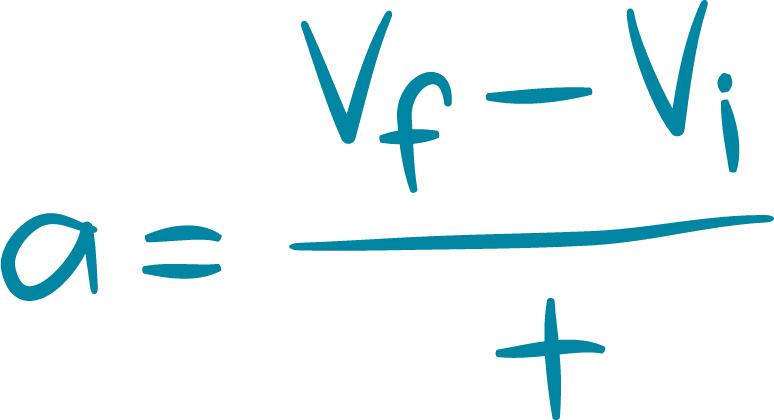

Interested in learning more? Download sample lessons, unit overviews, an overview of the scope and sequence, and progressions, or watch students and educators from the CALM pilot share their experiences. https://www.terc.edu/calm/

References

Ginsburg, L., Manly, M., & Schmitt, M. J. (2006). The components of numeracy. Harvard Graduate School of Education, National Center for the Study of Adult Learning and Literacy. https://www.ncsall.net/fleadmin/resources/research/op_numeracy.pdf
Kilpatrick, J., Swaford, J., & Findell, B. (Eds.). (2001). Adding it up: Helping children learn mathematics. National Research Council, Mathematics Learning Study Committee, Center for Education, Division of Behavioral and Social Sciences and Education. National Academies Press. https://doi.org/10.17226/9822
Pimentel, S. (2013). College and career readiness standards for adult education. U.S. Department of Education, Ofce of Vocational and Adult Education. http://lincs.ed.gov/publications/pdf/CCRStandardsAdultEd.pdf
Heidi Schuler-Jones is the Director of the Adult Numeracy Center at TERC. She has worked in adult education since 2006, spending much of that time expanding her understanding of tools and instructional strategies that make math meaningful, accessible, and fun for adult learners. She manages the SABES Mathematics and Adult Numeracy Curriculum & Instruction PD Center, oversees updates, research, and teacher support for the EMPower math series, and continues to facilitate professional development such as the Adults Reaching Algebra Readiness (AR)^2 institutes. At SABES, she was the lead developer of the Curriculum for Adults Learning Math (CALM). She is the president of the Adult Numeracy Network .

PROGRESS Volume 33, No. 2
p. 5
Math Phobia: You Don’t Have to Be an Expert
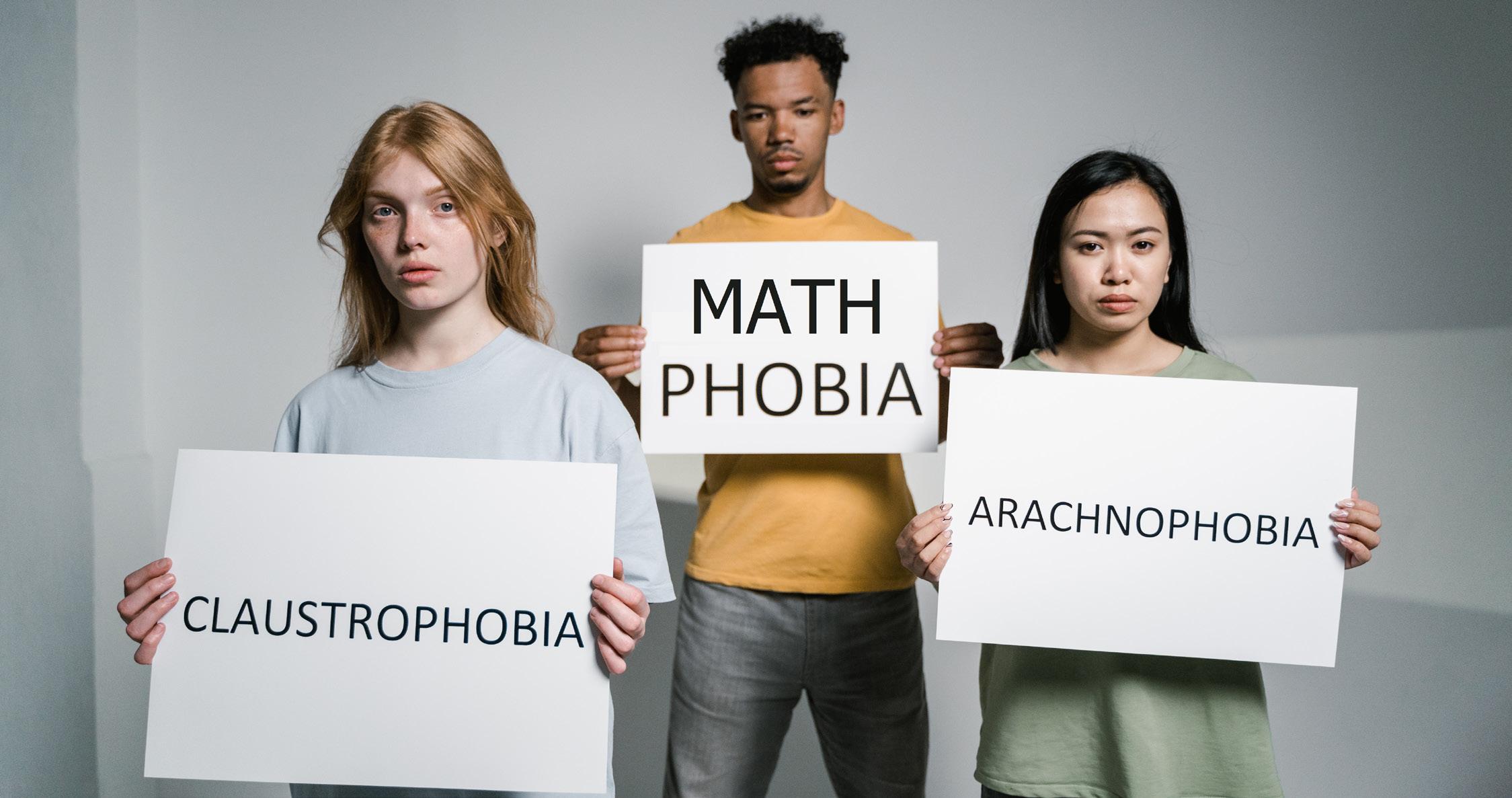 by Pamela Stolz
by Pamela Stolz
Math, a simple four-letter word that can elicit a large range of emotions, from excitement to complete panic attacks, and everything in between. Often, professional development sessions are created to help instructors teach math. But what if the instructor has some level of inexperience, some math anxiety, or total phobia?
As adult educators, we are often tasked with teaching an extensive array of topics to our learners. Sometimes we are fortunate to teach what we enjoy, and our excitement shows through to those we teach. However, we are also asked to teach outside of our own comfort zone with other topics. Just as our excitement for a particular subject can be contagious, so can our own personal anxieties. Whether you are a frst-year teacher or a 20-year veteran, we all have areas that bring our nerves to the surface. Dangling participles anyone? Trying to remember which king was in power during which war can be hopeless for some. Other students, and instructors alike, may throw up their hands when balancing chemical equations or creating Punnett Squares. But, for some reason, math seems to bring out the insecurities in people more so than the p.
other core subjects. Those insecurities can materialize as a particular topic such as geometry, or the entire course itself.
I have been very fortunate to work in some diferent settings. I have spent my education career working with at-risk youth in alternative programs and in a juvenile detention setting. I have been given the opportunity to work with adult learners through GED® and Integrated Education and Training (IET) programs, and even tutor some in community college. I enjoy math, but admittedly was not that fond of it in middle school. I was fortunate to have a few teachers who gave me the opportunity to see math ‘my way’. Even though I am comfortable with math, I have continued to research other methods for mathematical concepts. This efort has given me the ability to teach my students multiple methods and once we fnd the method that works best for them, they fnd success.
The dilemma we now face is how to teach a subject when our own skills may not be 100%. Although it can be tempting to put our students on computer programs or tell them to watch videos, these options are not necessarily solutions. As the
PROGRESS June 2023
6
pandemic has shown, there are a lot of students who are not successful learning from a computer, regardless of the instructional method (e.g., video, one-to-one, small group, etc.). Even if they can utilize some of the technology, what do they do if they have questions in an area where you are uncomfortable? It is possible that over the next few years, a number of students we receive coming out of the pandemic learning will echo this same sentiment—“I could not learn on the computer.”We are lifelong learners, which also makes us students, too. So, what do we do?
First and foremost, give yourself grace to know it is OK not to be perfect. Just because you are en educator, does not mean you have to know everything. As an educator, you can make mistakes and be unsure– that makes you human. You can also acknowledge, both to yourself and your students, that you do not know the answer but you will get the solution.
Next, think about your personal struggles. Was it a particular teacher? Did a specifc topic, such as fractions or algebra, bring you to the point of frustration? Are these the same areas you may avoid teaching, or rush through? Once you have
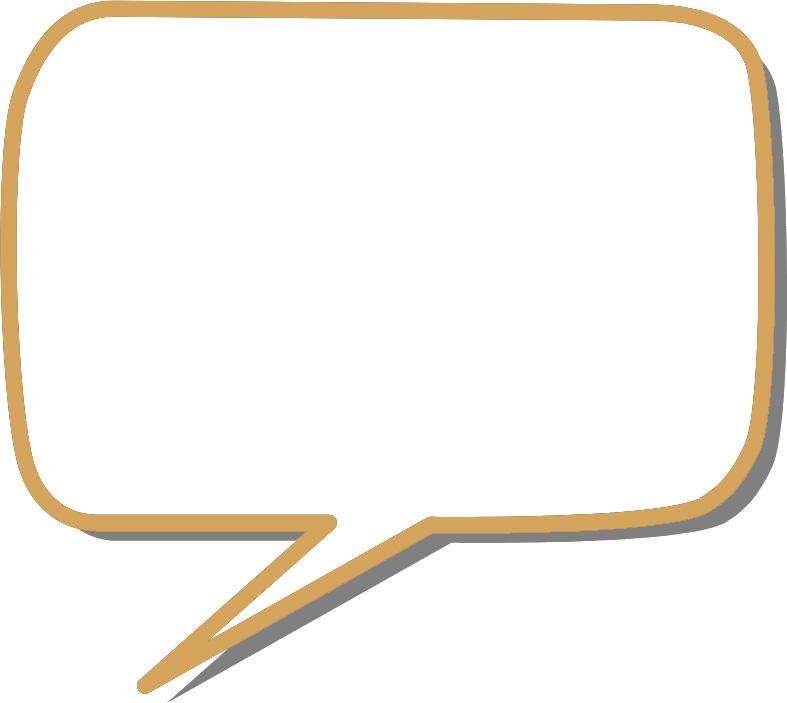

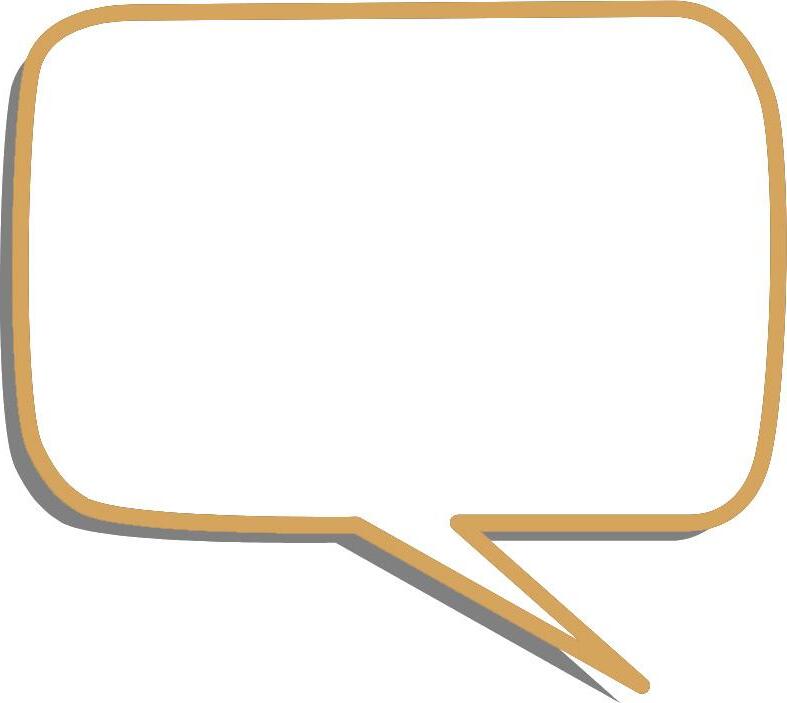

determined where some of your own insecurities lie, you can begin to work on those areas for yourself. The best part about learning now is that you have complete ownership over your learning, from how you learn to what you learn. Find a resource that will help you understand and push you own fears to the corner. Maybe look at diferent modalities such as manipulatives and pictures. As you overcome your insecurities about a specifc topic from slope to math in general, you can become a better and more confdent instructor for your students.
Lastly, fnd resources. The Internet has a multitude of videos and programs designed to show everything and anything. From Khan Academy to Math and Science, there are videos that show every possible way to fnd the solution to a problem. For those instructors who are struggling with just a few areas, this might be a good starting point. If you were that student who struggled with the one way your teacher taught, look for a video that provides a diferent method. It may give you an entirely new perspective on the topic, making you more comfortable teaching someone else.
Continued on p. 8>>>

PROGRESS Volume 33, No. 2
“I never understood the way my teacher taught me.”
“I cannot do fractions to save my life!”
“My anxiety level is rising just thinking about math.” But wait, I AM THE TEACHER!!!
“Why are there all of these letters in math, shouldn’t it be numbers??”
p. 7
You may be the only instructor in your classroom, but you are not alone! There are hundreds of adult education instructors around the state and no doubt, there are those who have your same insecurities. Network. Connect. You may be the type of learner who needs that face-to-face assistance and not the virtual world. Reach out and ask for help! Once again, it is OK to not be perfect and all-knowing. We tell our learners to ask for help when they are struggling, so we need to allow and encourage ourselves to do the same thing. So many times, instructors do not ask for help. Being an instructor does not mean knowing the content inside-out. Being the instructor does mean, however, that you acknowledge when you need a little assistance yourself. Contact your organization or the VALRC and ask for help. Start or join a professional learning group that focuses on helping instructors master material, as well as the students. Ask if there is someone in the local area who might be a “guru” in that particular subject and ask them for their guidance.
Having students in your class with disabilities, or English Language Learners, can add some additional challenges to an already tough subject to teach. The VALRC has some wonderful resources and people who will be glad to assist. Once again,
all you have to do is reach out. Connect with other teachers in the state who have similar class situations. From lesson plans to worksheets, manipulatives to advice, there are plenty of teachers willing to share their materials, methods, and tips.

“I want to learn math from someone who is as lost as I am”, said no student—ever. Math phobia is real on many levels, and not just for the students. Math may not be your favorite subject but being a teacher does not mean you have to teach entirely on your own. As a group, we are our own best resource.
Pamela Stolz is an instructor with Southside Programs for Adult Continuing Education (Region 19). She has more than 22 years of teaching multiple levels of mathematics (grades 6–12) and science to at-risk youth. Her more recent passion of the last four years is teaching ABE/GED® students, both virtually and in-person, which also includes teaching one year as the Integrated Education and Training (IET) instructor for a Certifed Nursing Aide (CNA) class. Pamela holds a bachelor of science degree in industrial engineering and operations research from the University of Massachusetts and a master’s degree in special education from Old Dominion University.
PROGRESS June 2023 >>>Continued from p. 8
The dilemma we now face is how to teach a subject when our own skills may not be 100%.
p. 8
The Mysterious World of Math
by Kathaleen Shelor
I’mTrying to Love Math, a picture book by Bethany Barton (2019), is on display in my adult education classroom. Whenever I hear the infamous question, “When am I ever going to use this?”, I take a few minutes to read this humorous book that makes a difcult subject more meaningful. I’m Trying to Love Math contains many interesting ways that math is used in our everyday lives. You see, my frst teaching objective is to address a fxed mindset that thinks mistakes and struggles mean you are not good at something. Studies provide proof of the importance of mindsets in student learning (e.g., Carol Dweck). There are many things that play a part in learning math, and genes are not really one of them. There is no such thing as a “math person”. Just inside the cover of Bethany’s (2019) book is a quote by Margaret Wertheim, “Mathematics, in a sense, is logic let loose in the feld of the imagination” (unpaged).
I am continuously searching for ways to improve my teaching skills. Youcubed is a Stanford Center providing free and afordable mathematics resources and professional development. This website (https://www.youcubed.org) has been a valuable tool in my toolbox. The youcubed project is led by Professor Jo Boaler, a British author from Stanford Graduate School of Education. I participated in two of the courses ofered through youcubed’s professional development and I gleaned much regarding being a research-based teacher. Jo encourages teachers to provide challenges and meaningful problems. Problems that require more than rote memorization or just step-by-step performance of a formula. Jo also emphasizes the importance of mistakes. Struggle and mistakes are good. That is when the brain is more active. Making mistakes is part of learning, and it provides the teacher the opportunity to model error correction.

PROGRESS Volume 33, No. 2
Image by Freepik
Continued on p. 10>>> p. 9
Jo says, “Math is an open, visual, and creative subject.” Any math problem can be solved in a number of ways. People see math diferently. I had the opportunity to model Number Talks in a few elementary schools in southwest and far southwest Virginia. Number Talks is a fve-to ffteen-minute warm-up activity using mental math skills. Learners are given computation problems that they are to solve without pencil/paper. They share and defend their answers. I have modifed the idea to ft the adult education classroom. Rather than use it as a warm-up, I incorporate the idea throughout math instruction. It involves all problem solving, not just mental math. It is the conversation that becomes the teaching tool. Responses to a math problem are recorded on the board, right or wrong. As students defend their answer, the class begins to see divergent ways to solve problems. Everyone learns in diferent ways.
Jo Boaler explains that students who learn methods and rules have to struggle to hold onto them. They are unable to organize and fle them away in the brain for later use. Our brain can only compress concepts. For example, linear relationships is a concept and solving for x is a method.
One of my favorite activities from youcubed is “The Painted Cube”. Students are shown a cube made up of 27 smaller cubes. The larger cube is dipped into a bucket of paint. I use The Painted Cubes Animation up to when the painted cube is pulled apart. Math is all about fnding patterns, and this problem allows students to see the importance of patterns to the understanding of mathematical concepts. I apply the Concrete-Representational-Abstract (CRA) method of instruction to work our way through using various size cubes. Keep in mind that the three “levels” of CRA are not necessarily linear. I begin with the animation, move to wooden cubes (or sugar cubes if you want to color them), and fnish with questions such as “How many small cubes have 3 sides painted?” or “How many have not been painted at all?” The lesson concludes with “How many faces would be painted in a cube of any size?”The fnal step involves coming up with equations to ft any size cube.
Using manipulatives at the concrete level, as described in the Painted Cube activity, leads to greater understanding of abstract math concepts and increased student performance. They give students an understanding of the concept, so they are not just memorizing algorithms. Remember, the brain can only compress concepts. Learning theory and educational research support teaching with math manipulatives. Manipulatives have a place not only in elementary grades, but also in middle grades and high school.
John A. Van de Walle and LouAnn H. Lovin, co-authors of the book series Teaching Student-Centered Mathematics (2013), believe that teachers must create an environment where students are trusted to solve problems and work together using their ideas to do so. In a student-centered model, teachers facilitate lessons to empower students to build new math skills utilizing their prior knowledge. In the Painted Cube activity, students used their algebraic skills to create equations to ft cubes of any size. Math is made up of a few ideas and the connections between those ideas. It is putting numbers together or taking numbers apart as well as discovering the pattern or sequence of numbers. Math is a very mysterious connection to the real world.
One of Van de Walle and Lovin’s books begins with a quote by Lex Cochran (1991). “And once I had a teacher who understood. He brought with him the beauty of mathematics. He made me create it for myself. He gave me nothing, and it was more than any other teacher has ever dared to give me” (van de Walle et al., 2013, unpaged). As an educator, my frst goal is to motivate students, then give them the opportunity to learn.
References
Barton, B. (2019). I’m trying to love math. Viking. van de Walle, J. A., Lovin, L. H., Karp, K., & Bay-Williams, J. (2013) Teaching student-centered mathematics professional development series. Pearson.
PROGRESS June 2023 >>>Continued from p. 9
Mathematics, in a sense, is logic let loose in the field of the imagination.
p. 10
Kathaleen Shelor has enjoyed 48 years in the feld of education. Her journey includes teaching at the preschool level up to and including serving as an adjunct professor at the university level. This journey has allowed her to provide professional development to teachers throughout southwest (SW) and far SW Virginia schools. She currently works as a high school equivalency instructor through the Workforce Development Program at New River Community College in Dublin, Virginia.


Kathaleen received her bachelor’s and master’s degrees in education from Radford University. She is a certifed professional developer through the Center for Research on Learning at the University of Kansas, and she has taken several courses through youcubed at the Stanford Center. She identifes as a research-based instructor who is continually learning ways to improve her teaching skills.


PROGRESS Volume 33, No. 2
“Math Manipulatives”by roswellsgirl is licensed under CC BY-NC-ND 2.0
“Day three-students share their thinking with manipulatives in math! #project365 #learning #crslearn”by janascottlindsay is licensed under CC BY-NC-SA 2.0
“File:Barchart math classroom 001.jpg”by jimmiehomeschoolmom is licensed under CC BY 2.0.
p. 11
Using manipulatives at the concrete level . . . leads to greater understanding of abstract math concepts and increased student performance. They give students an understanding of the concept, so they are not just memorizing algorithms.
Math Teachers vs. Teachers of Math
by Melissa D. Williams
Being able to do math is very different from being able to teach math: to understand the concepts that one is teaching, the real-world application of these concepts, and the variety of ways to approach the concept to make it relevant to the learner.

PROGRESS June 2023
p. 12
Ithink we need to explore some alternate models for our GED® instruction when it comes to math. When we look at our highly qualifed, excellent teachers; we should understand that they do not come neatly packaged with the aptitude to teach all four subjects with equal levels of efectiveness or confdence. I have heard testimonies from teachers who know their limitations and feel inadequate in serving their students when it comes to upper-level math content on the GED® test. They advocate for assistance, video lessons, resources, help, etc.
We need to be listening.
Not everyone can teach math. It’s just the truth. Being able to do math is very diferent from being able to teach math: to understand the concepts that one is teaching, the real-world application of these concepts, and the variety of ways to approach the concept to make it relevant to the learner.
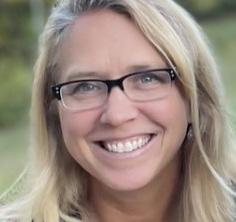

Inadequate teachers of math exist at all levels of education, doing various levels of detriment to their students because they just don’t know how to unpack the concept to make it make sense! I believe this systemic issue is a huge part of why so many people say they “can’t do math” or they are “bad at math”. I really don’t believe it. I think the system has failed them. At some point in their academic career something didn’t make sense. Maybe it was fractions; place value; the meaning of multiplication or division; how percent, fractions or decimals are related; or why the heck you would use a letter!? When a student loses the connection to why this concept makes sense in their world, they will likely lose interest in learning it. Efective math teachers know this to be true because they spend a year/ semester trying to overturn these negative opinions as they teach their own content. As adult education teachers, we are faced with the greatest obstacle to learning and to being successful in math as an adult—the task of repairing decades of frustration, failure, and fear (where these opinions have become convictions).
How can we design program models to maximize the expertise of the instructors that we employ? Some ideas our program is actively trying include GED® math boot camps and math ONLY classes. Some ideas that we are considering include upperlevel math professional development for teachers, two teachers per class/cohort that divide content,
and using asynchronous learning videos with a facilitator for math. If you have great ideas, let me know!
MWilliams@laurelridge.edu
Melissa D. Williams currently serves as the Regional Program Specialist for Laurel Ridge Community College Adult Education Program, Region 7. She has more than 20 years of experience in education and has taught elementary and middle school students as well as adults. Melissa taught 7th grade math while also serving as Math Lead Teacher at Peter Muhlenburg Middle School in Woodstock, Virginia before taking on the role of Regional Specialist. Melissa is currently focused on supporting and broadening the professional development opportunities for her adult education instructors. She truly believes in the value of lifelong learning and feels blessed to be in a position to help learners and fellow educators.
PROGRESS Volume 33, No. 2
p. 13
Lessons Learned Teaching Math to Adults
by Dr. Krissy Anderson-Bassett
This is my second year teaching math to adults. Education is one of my passions and I believe that no matter what age we are, we never stop learning! It is my conviction that the education of adults is just as important as the education of our children. We all learn diferently and discovering what works for each learner is half the battle. I fnd that applying diferent techniques and using creativity is fun!
I thought that teaching adults was going to be harder than it has been. There are several videos and online practice pages that have assisted me in making it easier both to teach and for students to retain what they have learned. In the process, there have been “aha” moments that showed me that learners know more than just enough to pass the GED® math reasoning test. The students have also learned skills to be successful in their life goals.
The frst thing I learned about teaching math to adults is that we must be honest! One of the initial things that I do when beginning a new class is share my story. I tell about my journey of math while in school. It was not my favorite subject. As a matter of fact, I spent many nights crying because I did not understand math. No matter how hard my mom tried, I would be frustrated and so would she.
Second, I share that before I teach each lesson, I must relearn the subject matter to be sure I know that I know what I am teaching. I go through all the videos and I practice so I can efciently help them and answer their questions. I also vet the videos to be sure they are not too confusing. If I am confused, I am sure the students will have some difculty as well.
Thirdly, when I am teaching and once I am done with what I know, I ask the students if they know a diferent way to work a problem. The students may have learned a method I do not know and that can give them a “light bulb” moment. The students can then choose the method that works for them. Sometimes, I purposely miss steps to see if the learners catch my error.
For my class, our favorite math assistant is Mr. J. Probably 95% of the time we watch his videos frst. We also watch Mr. Bufngton and Khan Academy. When it comes to videos, we always start with the basics. By basics, I mean we look for the frst age group that would learn a skill, then build on that. I thought that the adult learners would feel it was beneath them to watch a 3rd or 4th grade video so the frst time I introduce a video, I may say it is a
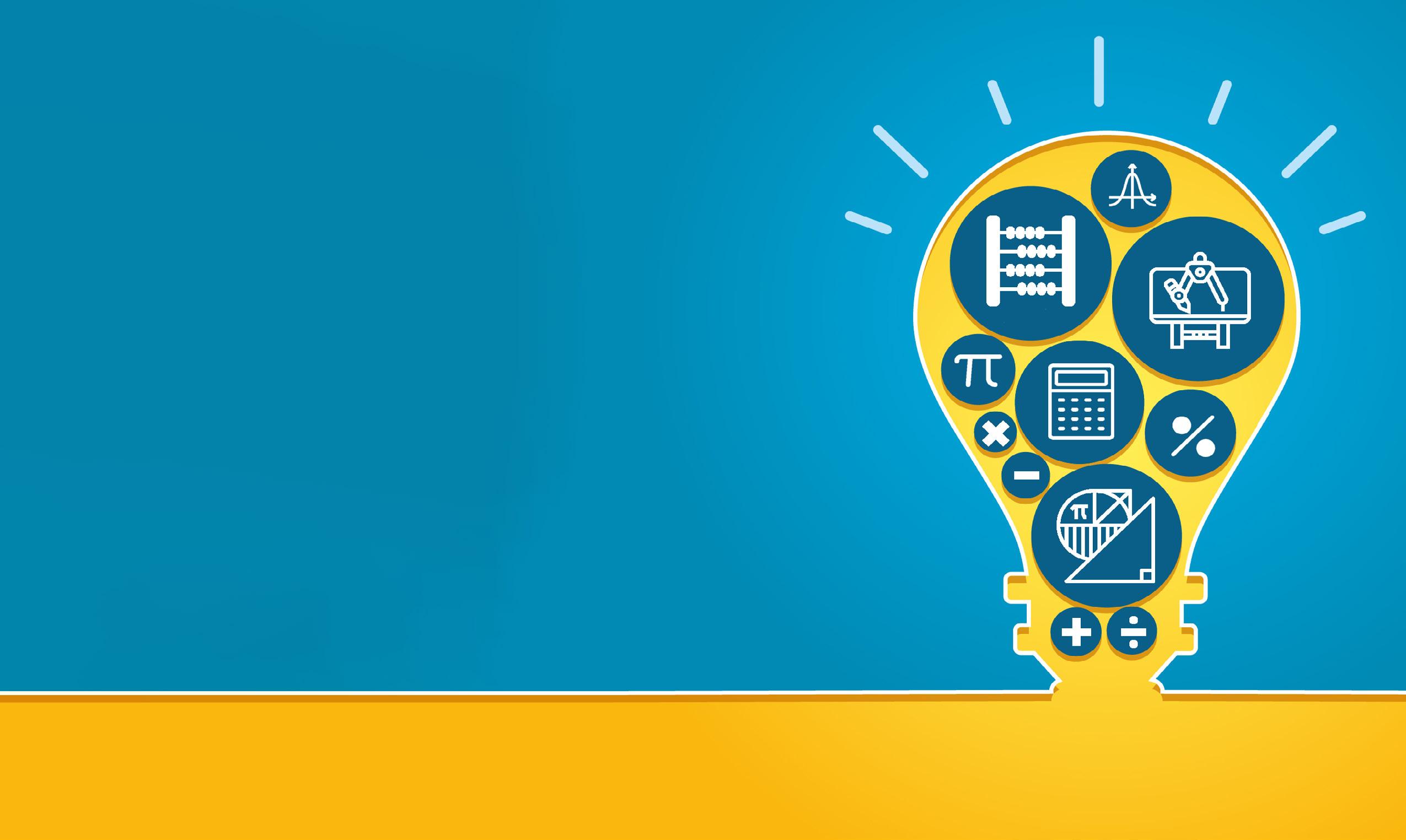
PROGRESS June 2023
Image by Freepik
p. 14
cartoon or song on a child’s level. My class has said unanimously—the simpler, the better.
When we do practice work for math, we begin the same way. We start on the grade level it is frst taught and move up levels from there. Most often, we use math-drills.com for worksheets to practice. We have also used dadworksheets.com and math-salamanders.com. We typically watch a video, practice some with the students walking through the resolution of the problem, and then the students have time to work a few problems on their own. Once the students are done with their independent practice, I ask for answers to the problems. When a learner provides an answer, I ask the class if they agree or disagree and we go with the majority answer. If the answer is correct, we celebrate the person who provided the original answer. If we have those who did not get it correct, we allow other students to walk us through to the resolution. We do this as a class. Videos, practice work, tools, and tips are uploaded to Google Classroom after class along with a homework assignment for reinforcement. We begin each subsequent class reviewing that homework.

It is important to note that we do not support negative talk when it comes to math. When learners say what they “can’t” do, they are encouraged to say they can. We change that to, “It may be a challenge, but I can do this math.” I have even had the learners from my class watch “The Little Engine that Could,” as a homework assignment. In my opinion, when we say what we can’t do, we shut our minds of to the possibilities.
There is not one sure method that works for everyone. Allowing learners to share methods that have helped them succeed has proven to be a positive step. Working through where a student gets stuck is important, no matter how many times it has been reviewed before. Sometimes we are the only
one who can provide that extra help. Adult learners have full lives! We can’t just show up, teach, and run. They are our students and I feel their education is just as vital as our children.
I almost forgot! We use the real world in their learning about math. Most of the adult learners work, cook, watch sports and deal with money. Using their everyday life helps to make math relatable. They already use it, though they may not recognize it, every day. These are some of the tools and tips that have provided a positive teaching and student retention experience for me. The success of these students makes it all worthwhile.

Dr. Krissy Anderson-Bassett is a GED®/ELA Instructor with Richmond Public Schools. She has been teaching adult education for two years and holds a bachelor’s of science degree from Longwood College (University) and both a master’s degree of divinity and a doctorate of ministry from The Samuel Dewitt Proctor School of Theology at Virginia Union University.

PROGRESS Volume 33, No. 2
p. 15
Teaching GED® Math
by Brandie Millar
eaching GED® Math can be a challenging task for educators as it requires the efective delivery of mathematical concepts to a diverse range of learners. It requires an understanding of the unique needs of adult learners, efective instructional strategies, and the ability to create a supportive learning environment.
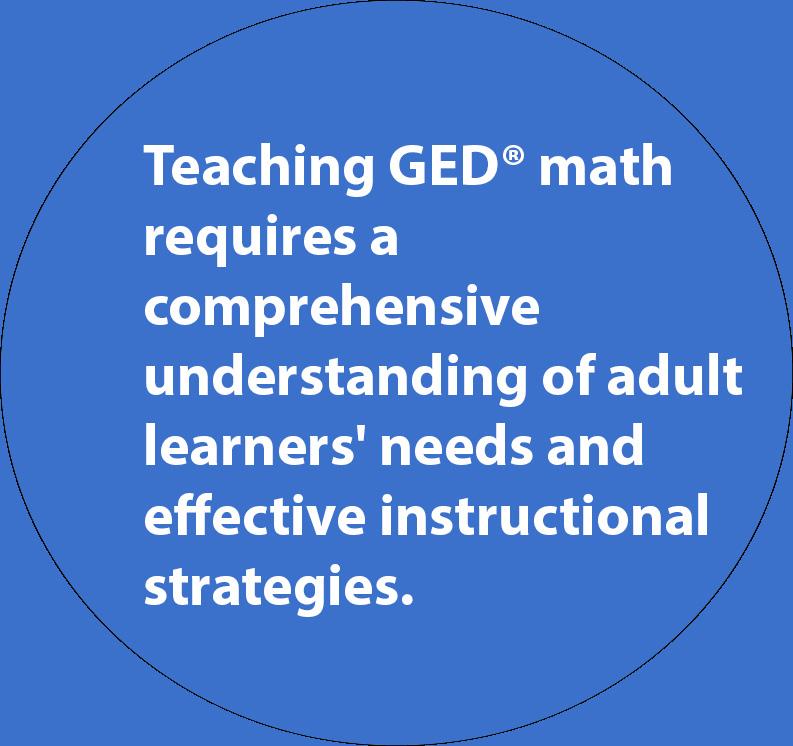
One of the frst steps in teaching math to GED® students is to assess the learners’ current level of mathematical knowledge and skills. This initial efort helps an instructor understand the learners’ strengths and weaknesses in order to develop an appropriate curriculum that addresses their needs.
Once the learners’ level of mathematical profciency is determined, the instructor can develop a curriculum that is aligned with the GED® test. The curriculum should cover all the topics that will
be tested in the GED® math exam, including algebra, geometry, statistics, and probability. There are many resources available to help teachers develop their plan of attack for math. A few of these options, which are free for teachers, include:

• Khan Academy: A favorite of many educators, Khan Academy provides videos, practice items, and helpful texts for students.
• Light and Salt Learning: A resource that provides full lectures by the creator in a variety of math subjects, this site also provides diferent levels of practice and many videos showing
PROGRESS June 2023
Image by pikisuperstar on Freepik
p. 16
problems worked out for students.
• CK-12: Although not math-centered, CK-12 provides many textbook-type resources that allow teachers to assign work to students if they like.
• Literacy Minnesota: This site provides lists tailored toward the GED® math test and lists out its contents to match those on the GED® test. The site includes everything a teacher would need for a GED® math lesson including lesson plans, warm ups, vocabulary, practice (many diferent methods), and assessments.

• ChatGPT: This is new for most teachers, but don’t let AI scare you! You can use ChatGPT to create practice problems in a variety of levels to meet the needs of students.
Teaching strategies should be tailored to meet the needs of adult learners. It is essential to recognize that adult learners have diferent learning styles and experience than younger students. Thus, instructors should use teaching methods that incorporate real-world examples, hands-on activities, and practical applications to make the material more engaging and relevant.
Another essential aspect of teaching GED® math is to create a supportive learning environment Adult learners often have signifcant life experience, which can be incorporated into the curriculum to make learning more engaging and relevant. Instructors should also create a classroom atmosphere that fosters a sense of community and encourages learners to feel comfortable asking questions and participating in discussions. Not being afraid to make your own mistakes as an instructor is a great way to help students feel comfortable and more confdent!
Technology can also play a signifcant role in teaching GED® math. Interactive software, online resources (like the ones previously mentioned), and educational apps can be used to enhance the learning experience and provide additional support to learners. Technology can also help instructors to personalize the learning experience by providing adaptive learning experiences tailored to the learners’ needs.
Although it may seem more difcult, teaching GED® math online is certainly an option for those learners who cannot attend an in-person class.
With a little practice from both the teacher and the student, an online class can run just a smoothly as an in-person class. Pushing a student to learn math online can also strengthen the digital skills necessary for success after the GED® diploma.
In conclusion, teaching GED® math requires a comprehensive understanding of adult learners’ needs and efective instructional strategies. The curriculum should be designed to meet the specifc needs of adult learners, and teaching methods should incorporate real-world examples, hands-on activities, and practical applications. A supportive learning environment should also be created to foster a sense of community and encourage learners to feel comfortable asking questions and participating in discussions. The use of technology can also enhance the learning experience and provide additional support to learners. With the right approach and tools, instructors can efectively teach GED® math and help adult learners achieve their educational goals.
Brandie Millar is an adult education instructor at Laurel Ridge Community College. She has been an educator for 17 years, teaching K–12 special education for 12 years and then working with adult education for the past 5 years. She is also a curriculum writer of both adult education and high school business courses for Virtual Virginia. Brandie holds master’s degrees in business management and educational leadership. Interested
PROGRESS Volume 33, No. 2
in learning more about how to use ChatGPT for instruction?
on to hear more from Brandie Millar and her experience incorporating AI into her lessons! p. 17
Read
How Do They Work Together?
by Brandie Millar
ChatGPT is one of several Artificial Intelligence (AI) chatbots that use a prompt given by a user to provide a detailed response. Microsoft and Google also have AI chatbots that allow for similar use, however, ChatGPT is free and easy to start and use.
I am a novice ChatGPT user, however, in just a few short days of using the tool, I was able to incorporate it into my lessons as a GED® instructor. I learned about ChatGPT by watching a short video online shared by a friend. As a teacher, I was immediately intrigued by how this new tool could help me in my classroom. I am always looking for ways to broaden my instructional approach to be able to reach more students in a more effective and efficient manner. ChatGPT is a tool that I added to my toolbox to do just that.
ChatGPT, like any AI, cannot be used as a one-stop-shop for anything, especially instruction. However, it can help provide instructors with new and fresh ways to interact with learners and the curriculum. With ChatGPT, it all starts with the prompt. To get the response that you are looking for, your prompt should be specifc and concise. As the user of ChatGPT, you enter a prompt, and then you receive a response based on that prompt.

For example, assume you want to provide your class with a warmup centered on inequalities but you don’t have any unused materials or questions that the students have not seen. You can simply enter a prompt such as “Create 10 inequalities problems that a student would see on the GED® test.” Assume your results come back and OOPS! You forgot to mention that you want the answers—we are trying to save time as educators! You can then

PROGRESS June 2023 + GED®/Adult Ed:
p.18
enter a second prompt that says “Include answers” and ChatGPT will generate the questions again, this time with answers provided.
Now, let’s assume you actually wanted those 10 questions presented as word problems. You would then enter a third prompt saying something like “Now make them word problems with answers.” There are no set ways that a prompt must be presented. However, to get the results you are looking for, your prompts should be as specifc as possible.
Let’s look at a reading example. You have had your students read texts and answer questions but you are trying to think of a diferent way for them to analyze what they are reading. A sample prompt could be “Write a 300 essay with 10 grammatical errors” or “Write a 5-paragraph essay with 10 words missing to allow for students to complete a cloze activity. Make the subject area science specifc. Include a word bank.”This would allow students to fnd errors in a text and fll in the blank with the correct word from a bank of words—two fantastic ways to analyze a text.
Finally, let’s put the learners in the driver’s seat. Since ChatGPT is free, instructors can show students how it could be used as a GED® study tool. Students could design prompts (an excellent skill!) and use the responses to help prepare for the GED® test. This allows students to take ownership of their learning while learning a valuable skill that they could use in the workplace. Remember, this
tool is just an addition to the many tools and strategies used by teachers and students to prepare for the GED® test. While not robust enough to cover the entirety of the curriculum needed, ChatGPT provides many novel uses and benefts.
Additional ChatGPT/AI Resources
ChatGPT: Leveraging AI to Support Personalized Teaching and Learning, Leveraging Technology to Promote Adult Learning


Artifcial Intelligence and the Future of Teaching and Learning: Insights and Recommendations (May 2023)
World Education: EdTech Bytes Generative Artifcial Intelligence webinar series
EdTech Center@World Education: Foundations for AI in Adult Ed
Education Week: How Teachers Are Using Artifcial Intelligence in Classes Today
MERC Research Brief: Balancing the Benefts and Risks of AI Large Language Models in K12 Public Schools
USDOE Ofce of Educational Technology: Artifcial Intelligence
Stanford University HAI: AI Will Transform Teaching and Learning. Let’s Get it Right.
PROGRESS Volume 33, No. 2
p. 19
Teaching in mass corrections, I now have more freedom than in the past to meet my learners where THEY need to be and I am able to have control over the design, fow, and implementation of the curriculum. Gone are the pressures of standardized testing, peer concerns (which are at the forefront when working in the public-school realm), parental or caregiver demands, and administrative pressures over test scores while making sure all students are successful despite that being something that I found is truly impossible, etc.
Now it is me, the teacher, being able to begin unencumbered and with a blank slate to help adults. Through humility, I earn their trust. Through knowing how to reach learners where they’re at versus some chronological grade-level material, I am able to return them to the impact and wonderment of knowledge from their youth and impart a curiosity for learning. I am able to see them truly remember things from their former school journeys and I get to now see the joy of giving them hope! There is very little on this earth as rewarding as seeing an inmate’s facial expression when they fnd out they’ve passed one of their GED® subset tests! To have them realize and feel the reaping of the reward for working very hard and staying focused, and the accomplishment of success through their own faculties is something they’ve not felt in a very, very long time. And to have that direct of an impact on another adult’s life? To be clichéd…it’s priceless!
The very frst step in any attempt to reach an adult learner and earn their trust frst starts with the instructor. A well-adept teacher knows that they themselves are there purely for the utilization of the adult learner. The adult learner is not there for the
teacher…they are there for themselves. The teacher’s role, if you will, is merely an academic servant, attempting to pass on mastery of content onto another. Until that job is done, or the adult learner has shown success, then the teacher has not been efective in either sparking curiosity, explaining content in a way that invokes the proverbial, “ahha,” moment, or is too engrained in the way they conduct their business to be able to adapt to the possibility of having to change how they instruct, and thus both teacher and learner sufer.
In my experience, enabling an adult population to be in charge of their own learning is the most efective approach. Then, it becomes the goal of the instructor to craft a lesson that involves all the components of a successful learning experience: teaching, guided practice, independent practice, and a chance for the learner to show their mastery level of the content.

To keep it simple, I will share the formula (that has evolved over time) to help me make teaching some of the hardest to reach be able to grasp content and yet not be overwhelmed by the material. This method encompasses every notion taught to future teachers in their college courses and also provides anecdotal and data-based results that apply to each and every lesson.
In this electronic generation, hardly anyone has the patience or attention level to hear any form of lengthy lecture-based instruction. So, what can we do? I recommend using the Mozilla Firefox web browser and through “add-ons,” download an applicable YouTube video as an MP4 format to play over Windows Media Player in lieu of preparing a lecture and proceeding to boringly go through
PROGRESS June 2023
p. 20
Teaching Adult Learners in Corrections with an Emphasis on Numeracy & Mathematical Operations
by Christopher P. Scott
instruction. Most YouTube videos do allow them to be broadcast as instructional aides, however, always be sure to check on permissions of copyright laws or the wishes of the content creator(s) of the video. Also, it is important to be cunning and know your audience. A LOT of simple math videos will have very child-like qualities, so it is imperative to be respectful and cater to your learner(s) by providing age-appropriate content, regardless of the gradelevel of the material. Here is an example of a video that when played on its own, works well for an adult audience.
• Numberock’s Rounding Song for comparing and ordering numbers
From there, an instructor now has two options. One, if the learner seems to have grasped the lesson presented in the video, then move on to the work portion. If they have a question, then take that time to show examples on a whiteboard or through tangible items to bring the material to life. After any initial confusion has been cleared up, then proceed to an instructor-made PowerPoint lesson or notes. This is an efective substitute for reading a boring, long—and often confusing—text book.
• Instructor-Made PowerPoint lesson on comparing and ordering numbers
On a side note, it is important to recognize that adult learners usually have a backstory! School— due to possible anxieties of being around a large group of people, learning disabilities, issues within their home, etc.—has inadvertently alienated them from the basic knowledge levels of academics most people take for granted. These experiences need to continually be kept in mind.
Now, back to the lesson. Once the PowerPoint is handed out, a Word document with verbatim questions from the PowerPoint notes is then given to the learner(s). This ease of answering the questions calms them internally and immediately flls them with an, “I can do this,” sense of things. Once you have that, you can get a LOT further in anything you try to teach them!
After their Word document questions are fnished, they should have had some guided (if they need help), or independent practice. The instructor then moves the learner(s) on to practice material from a book, worksheet, or other media that hones the skill that is trying to be mastered. For example:

PROGRESS Volume 33, No. 2
Continued on p. 22>>> p. 21
Lastly, the learner is provided with a practice worksheet to take back with them to try at home. Invite them to use their PowerPoint notes, Word questions, etc., that they need in order to be successful.

And isn’t that success all we want as teachers?
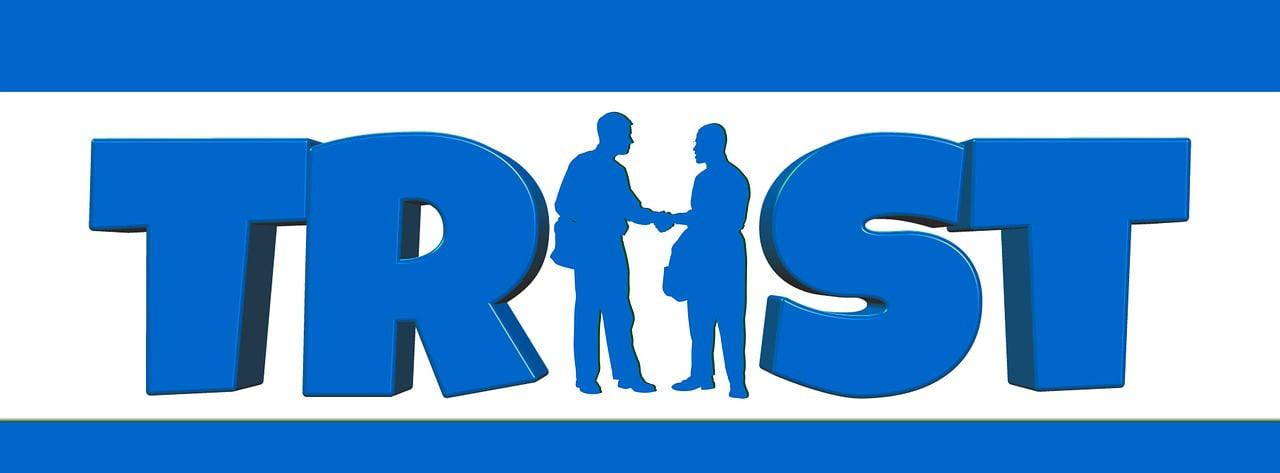
Christopher Scott attended Virginia Commonwealth University where he received his bachelor’s degree and the University of Virginia for his master’s degree in teaching for special education. He is endorsed in learning disabled (LD) and emotionally disabled (ED) populations. Chris taught public middle school for 10 years in Mathews County Public Schools at Thomas Hunter Middle School utilizing a mixture of self-contained and collaborative teaching models to serve the students in his caseload. From there, his desire to have a more direct impact on the entire learner led him to United Methodist Family Services in Richmond. UMFS is a day and residential school model with emphasis on trauma-informed care and intense mental health services, coupled with housing, and education to youth having experienced severe forms of trauma, abuse, or neglect. For fve years, Chris taught science to residential students from 5th to 12th grade. He now teaches for Henrico County Public Schools – Adult Education in their Henrico County Jail – East, located in New Kent County where he helps adult inmates attain their GED® diplomas.

PROGRESS June 2023
>>>Continued
from p. 21
p. 22
Wait, What!?! Fractions in a Reading
Class?
by Janet Sodell
At The READ Center in Richmond, Virginia; our classes include a mixture of low-level readers—all reading below the 4th grade equivalent. In addition to reading, our classes also incorporate numeracy and digital skills. But how to include math in a reading-focused class which, in addition to a wide range of reading levels, also has a wide range of math skills? In a word: fractions.
Yes, I start with fractions rather than decimals or percentages for a reason. Most of my students have some knowledge of decimals and percentages, but none have any experience using fractions. Fractions level the playing feld.
While teaching fractions, I am mindful that some students have a long-term goal of obtaining their GED® credential, but others already have a high school certifcate or are retired and just learning to read better because “it’s their turn” after raising children and working. To accommodate all long-term goals, I incorporate the following strategies in all my fraction lessons:
Anticipate Anxiety. Anxiety about math is very real and interferes with how well a person can actually learn. High anxiety does not mean low ability, but more likely that somewhere in that person’s past they had a bad experience with numbers. It is important to acknowledge anxiety and reassure
students that they will, in fact, “get math” because you are going to start at the beginning and go slow. It is also important to do what you can to stop the spread of math anxiety because that can happen in your classroom. If you have tutors who are unsure of math or have a negative outlook towards math, put them with your confdent students. The students can actually reassure the tutor. Conversely, put your math loving tutors with students with math anxiety. The tutors can reassure the students and help reduce the students’ stress.
Go Slow. How do you eat an elephant? One bite at a time. The same is true with fractions. Start at the beginning, go slow, and incorporate familiar items from life, like squares of a candy bar. Not only does talking about a piece of a candy bar make it relatable to students, but it also helps reduce anxiety level—especially if the class gets to enjoy them afterwards!
Make fractions less abstract. Draw pictures on the board. Have worksheets where students need to color in the correct number of pieces to have the drawing match the written fraction. Bring manipulatives into the class. A set of measuring cups is a great way for a student to see how, as the bottom number or the denominator gets bigger the pieces get smaller (1/1, 1/2, 1/3, 1/4). Use rulers and tape
Continued on p. 24>>>

PROGRESS Volume 33, No. 2
p. 23
>>>Continued from p. 23
measures along with folded and cut paper plates to demonstrate parts of a whole. Always remember: fractions are more than pizza and cookies! When drawing pictures to demonstrate fractions, use both round and rectangular pictures. You would be surprised how many students understand fractions when you draw a circle but come to a complete standstill when the picture is a rectangle.
Have fun. Life is too short not to have fun! Playing games reinforces learning and helps take students’ minds of their anxiety. Below are links to various game directions as well as a game board template. I print my game boards on card stock and then laminate them to make them last longer.
Game Directions
Game Board
Relate examples to real life. Don’t work on fractions for fractions sake. Rulers, baking, and telling time are three areas to start with and then expand based on your students’ interests. Is there a painter in your class? Use a problem like “It takes half a gallon to paint one wall in a room. How many gallons do you need to paint the entire room”?
Remember that words matter. This is especially true when working with students whose long-term plan includes a GED® credential and those who will
never need to know math terminology. Consistently use phrases like “top number or numerator” and “bottom number or denominator” when talking about fractions. The use of plain English words (e.g., top/bottom) aids in the understanding and relatability of fractions for everyone. Always connect the plain English words with the proper term (numerator/denominator) to help prepare your GED® bound students.

Remember that all of this is actually part of a reading class! Word problems are a fantastic way to incorporate fractions and reading comprehension in the same class. Even when not working on fractions, I often start class with a word problem. Students always love it when I make them a part of the word problem. For example, “John has 3 brothers and 2 sisters. What fraction of his siblings are male”? I have no idea if John has any brothers or sisters, but he enjoys being the focus of a word problem.
So, hopefully you now don’t think that teaching fractions in a basic reading class is such a crazy idea after all. Remember the steps and strategies above, and take cues from your students as to what’s working for them. As with everything we teach, the more real we can make it for them, the more connected and engaged they will be as they learn. Probably the best piece of advice is to remember to take your time and be fexible. When you take time for learners to absorb and master information before proceeding, you both reduce their anxiety and you change their lives. At the end of the day, isn’t that why we do this?
Janet Sodell, M. Ed., has been teaching low-literacy adult basic education students to read better for more than 23 years. She is a tutor trainer with The READ Center in Richmond where she also teaches two online, multilevel classes. In 2019, Janet was awarded the Joan E. D. Kushnir Teacher-of-the-Year award by the Virginia Association for Adult and Continuing Education (VAACE).
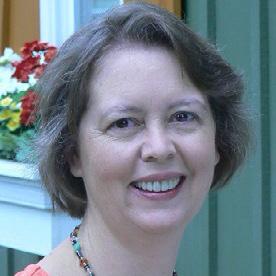
PROGRESS June 2023
p.24
Integrating Numeracy into the Adult ESOL Classroom
 by Hali Massey
by Hali Massey
The defnition of numeracy is “the ability to confdently interact with and engage in the mathematical demands of everyday life in the home, workplace, and community” (Ciancone, 1996, unpaged). Numeracy tasks occur regularly in everyday life, and it is important for adult English language learners to have the language and context in order to engage with these tasks (Ginsburg et al., 2006). In addition, the U.S. uses several systems that are most likely new to recent immigrants, refugees, or new Americans, such as the imperial system of measurement, monetary values, western calendars, etc. Therefore, numeracy in the adult ESOL classroom helps orient English language learners to these systems and measurements that they will be encountering.
Examples of numeracy include:
• Using quantitative data to express facts and opinions, such as comparing prices or sales or analyzing statistics to make decisions or form opinions.
• Calculating percentages, such as when shopping and calculating sale percentages and when trying to calculate how much tax is owed or how much tip to leave.
• Measuring items, such as knowing how much medication to take and measuring ingredients when cooking.
Some strategies for incorporating numeracy into the adult ESOL classroom include:
• Incorporate numeracy into classroom texts, videos, vocabulary, tasks, and discussions by aligning ESOL content with numeracy objectives: ESOL instructors can look at their curriculum or course materials to see where numeracy aligns with their content. This ensures that numeracy objectives will be contextualized within the already established classroom curriculum.
See the following examples:
Continued on p. 26>>>
PROGRESS Volume 33, No. 2
p.25
Profciency Level ESOL Content Numeracy Objective
Beginner Sharing personal information
Learn names of numbers (1-100) in order to share age, birth dates, and phone numbers.
Beginner
Sharing time from a clock and dates from a calendar
High Beginner Shopping and buying goods
Use numbers to communicate the time on a clock and dates from a calendar in order to answer the questions of “What time?” and “When?”.
Use amounts of money in dollars and cents to answer the question of “How much?”.
Low Intermediate Shopping and buying goods
Use addition and subtraction to add up amounts, calculate totals, and determine balances.
Low Intermediate Giving directions
Use diferences in time to answer the question of “How long does it take to get from Point A to Point B?”.
Intermediate Cooking and food
Use whole numbers and fractions to follow and/or write a recipe.
Example Lesson Plan
Intermediate Paying bills and making a budget
Calculate a monthly budget using a given monthly income.
High Intermediate Paying taxes
Use percentages to calculate food and retail tax.
Advanced Housing
Advanced Paying taxes
Determine the fnancial benefts of buying versus renting.
Use percentages to calculate state and federal income tax.
PROGRESS June 2023 >>>Continued from p. 25
p. 26
• Use graphics or images to represent statistics or situations that allow for numeracy discussions/activities: ESOL instructors can use graphics or images to engage learners in conversations that support learners in developing metalinguistic and metacognitive skills for processing numeracy situations in their everyday lives (Ciancone, 1996). See the following examples:
o Estimation 180: This resource provides images of everyday objects that allow learners to make estimations about measurements and amounts. These types of conversations help learners develop metacognitive skills for thinking about and discussing these types of estimations in everyday situations.
o 3 Act Math Lessons: When using this strategy, instructors present a scenario, a confict that requires mathematical processing and thinking, and the opportunity for learners to work together to solve the confict or problem. These lessons contextualize math thinking and processes into situations that adult learners can relate to which allows them to transfer these skills into their everyday lives.
o A Splat Routine: This strategy allows instructors to engage learners in conversations around what they observe and how they reach their conclusions. This supports learners in developing metalinguistic and metacognitive skills for having mathematical conversations. These discussions also allow learners to learn from the perspectives and thought processes of other learners.
• Assess how learners are using or need to use numeracy skills in their everyday lives and build of of those situations or problems. (Ciancone, 1996)
In addition, these are some best practices to follow when incorporating numeracy into the adult ESOL classroom. (Ciancone, 1996)
• Ensure that numeracy activities are interactive, collaborative, and relevant to the everyday lives of your learners.
• Encourage the focus to be on thought process and not on wrong or right answers and acknowledge various ways of thinking and reaching conclusions.
• Scafold with visual representations such as images, graphs, charts, drawings, etc.
• Integrate numeracy into the adult ESOL classroom from the beginning; meaning that all levels of profciency are engaging in numeracy activities.
References
Ciancone, T. (1996). Numeracy in the adult ESL classroom. Center for Applied Linguistics (CAL). https://www.cal.org/adultesl/ resources/digests/numeracy-in-the-adult-eslclassroom.php#:~:text=Numeracy%20is% 20the%20ability%20to,opinions%20and% 20to%20analyze%20situations
Ginsburg, L., Manly, M., & Schmitt, M.J. (2006). The components of numeracy. National Center for the Study of Adult Learning and Literacy (NCSALL). https://www.ncsall.net/fleadmin/ resources/research/op_numeracy.pdf
Hali Massey, M.A. TESOL, is the English for Speakers of Other Languages (ESOL) Specialist at the Virginia Adult Learning Resource Center (VALRC). In this role, she coordinates teacher professional development that aligns with state and federal initiatives, as well as local interests and needs. This work includes the design and delivery of online courses, face-to-face workshops, and virtual meetings, all with a focus on the practice of teaching English to adult learners.
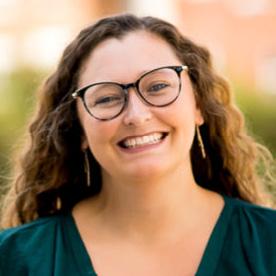
PROGRESS Volume 33, No. 2
p.27
2023 PROGRESS CALENDAR JUN SEP OCT
29 Metropolitan Educational Research Consortium (MERC) Summit: Connecting Research, Policy, and Practice Through Shifting Paradigms in Public Education Richmond, VA JUL
18 VDOE Open Conversation 12:00 p.m. –1:00 p.m. Virtual
18–21GEDTS® 2023 Annual Conference New York City, NY
VALRC Online Courses & Webinars begin (See event calendar.)
18–21Adult Education and Family Literacy Week
19 American Association of Adult & Continuing Education (AAACE) 2023 Annual Conference: Informing, Reforming, andTransforming:The Vital Role of Adult Education in ChallengingTimes Virtual
29–30 VATESOL Conference Richmond, VA
3–6 American Association of Adult & Continuing Education
(AAACE) 2023 Annual Conference: Informing, Reforming, and Transforming:TheVital Role of Adult Education in ChallengingTimes
Lexington, KY
4–5 National Council for Workforce Education (NCWE) 2023 Conference: Oh, Say CanYou

Succeed: Keys to a BannerYear in Workforce Development
Baltimore, MD
15–19 Association for Educational Communications & Technology (AECT) International Convention
Orlando, FL
23–25 NCFL 2023 Families Learning Conference
Omaha, NE
23–26 VAACE Virtual
20–23 Correctional Education Association 77th CEA International Conference & Training Event Portland, OR
AUG















 by Pamela Stolz
by Pamela Stolz

































 by Hali Massey
by Hali Massey












